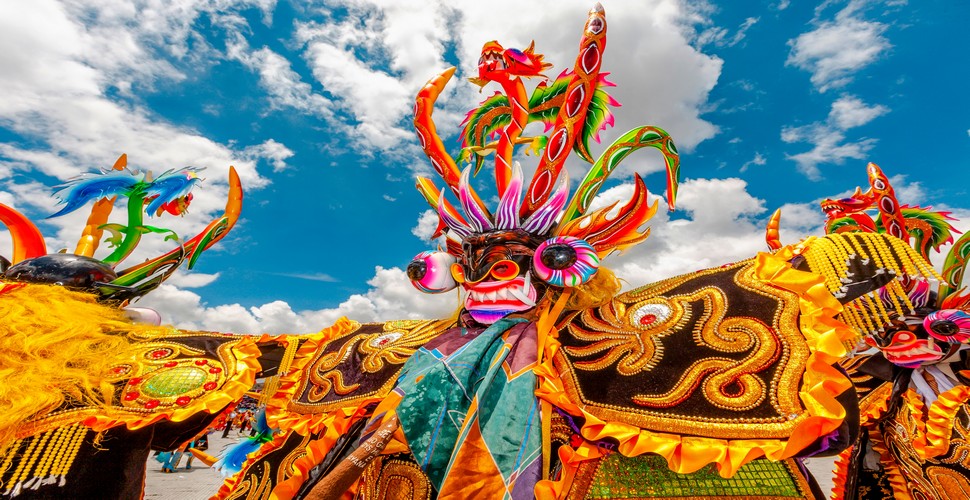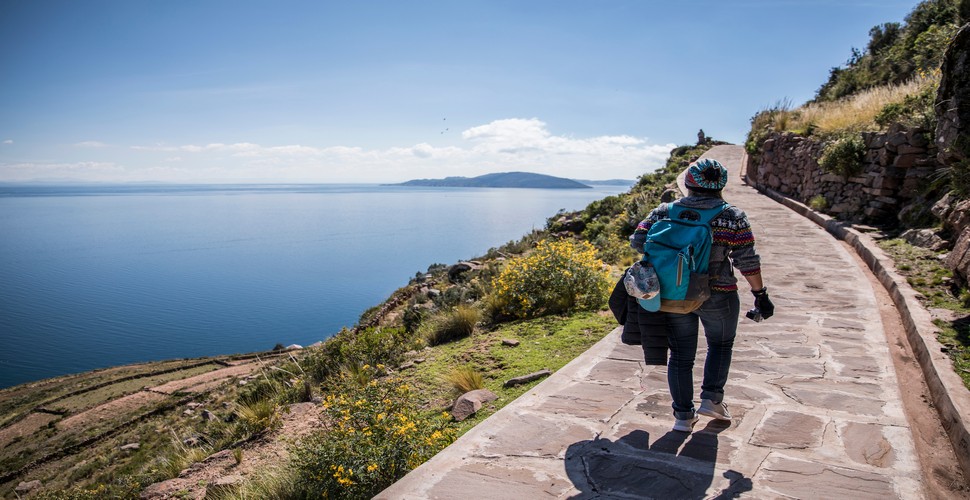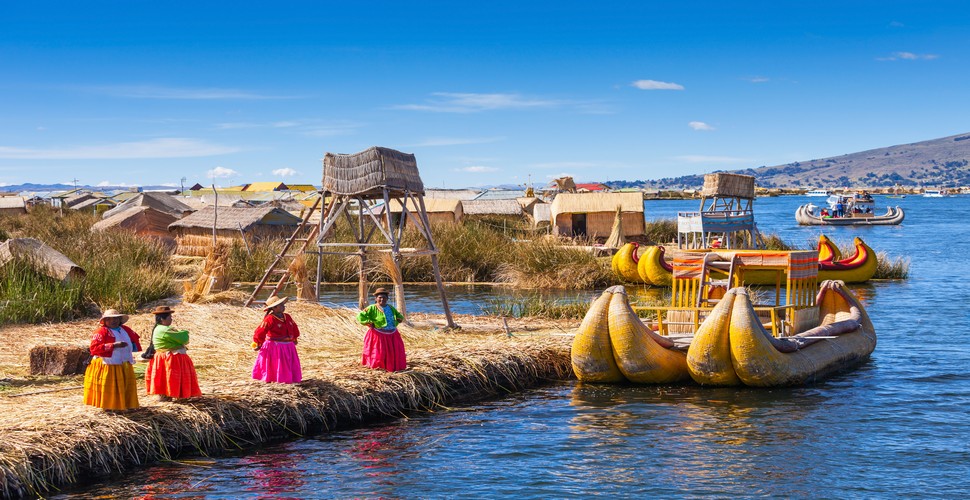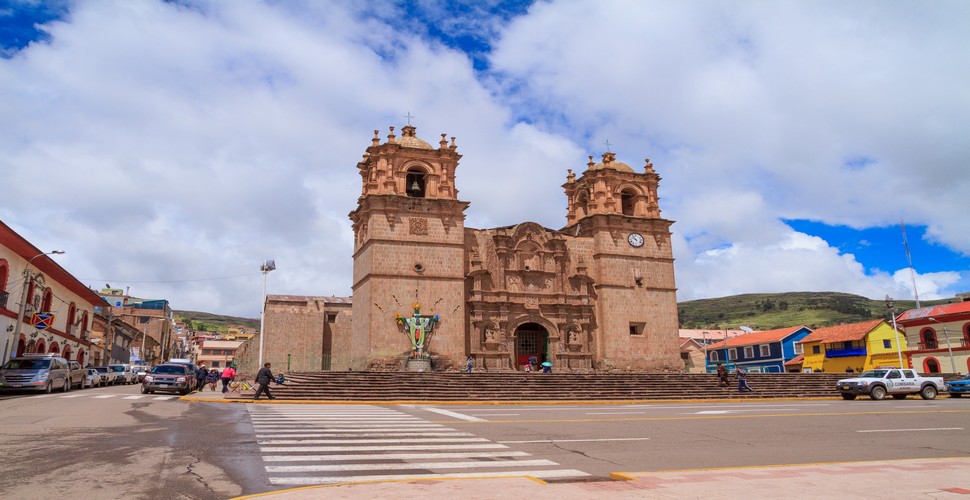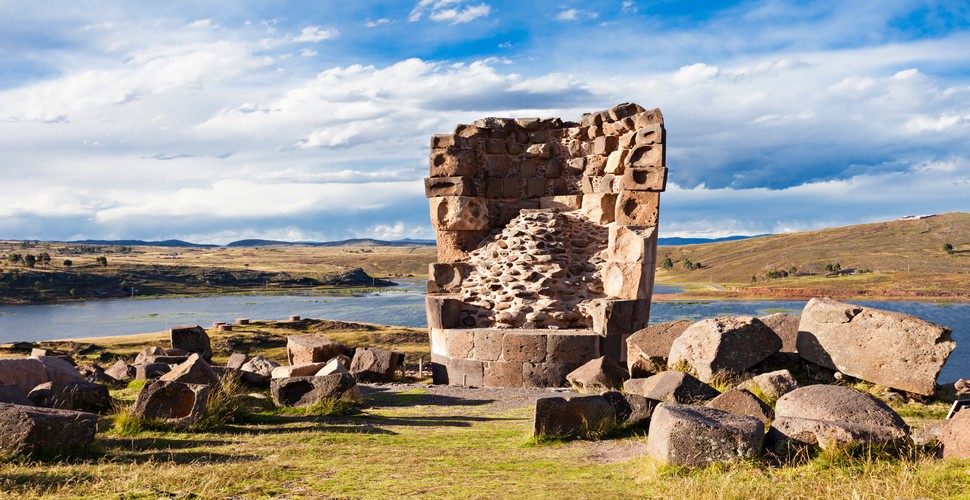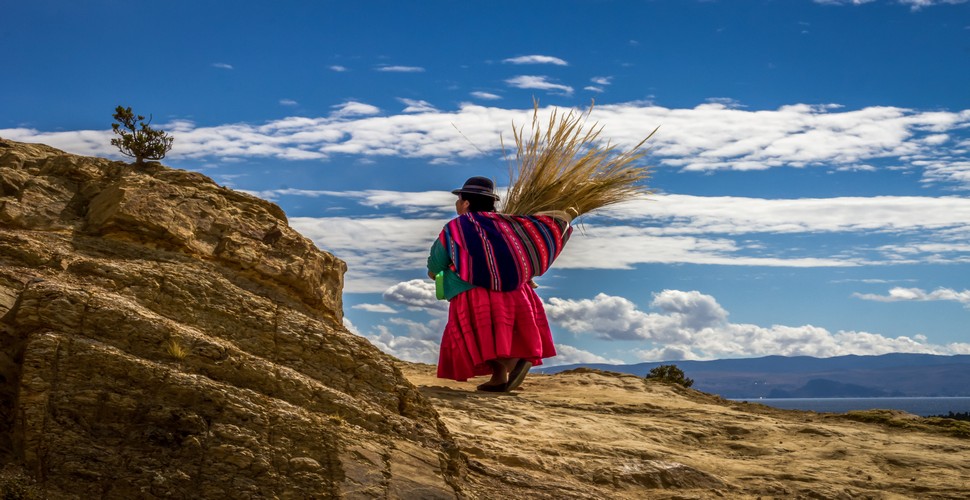
FAQs for Puno
Written by:Valencia Travel
Last Update: 2025-01-06
Located in the southeast of Peru, the Puno region is characterized by a variety of limpressive landscapes. Part Andean mountain range, part Amazonian jungle and mainly ‘ Altiplano ’ or high Andean plateau. The origins of the lake come from a long process of evolution through tectonic movements approximately 300 million years ago. Lake Titicaca is the heart of the Altiplano, fed by rains and nearby melting glaciers. Its 8600km² of water regulates the temperature, capturing the solar energy during the day and releasing it at night. This creates a unique climate which produces aquatic resources allowing locals to farm livestock and produce agriculture including potatoes and quinoa. Here are some of the most Frequently Asked Questions about Puno and Lake Titicaca.
Virgin de la Candelaria, Puno
What altitude can Lake Titicaca be found?
Puno is located at an altitude of 12,556 feet (3,830m) above sea level. Puno is located at an altitude of 12,506 feet (3,812m) above sea level and is the highest lake in the world.
Where is Lake Titicaca?
Lake Titicaca straddles the border between Peru and Bolivia. The city of Puno is the main access point to the lake from the Peruvian side and is located in the Puno province of Peru.
Amantani Island, Lake Titicaca
What is the weather like on Lake Titicaca?
Weather in Puno is divided into two seasons – dry and wet. The wet season runs from October – April with temperatures between 34°F to 46°F (0°C-8°C) with an average of rainfall of 15 – 20 days per month during this period. Dry season is from May – September with average temperatures between 46°F to 75°F (8°C-24°C) and clear blue skies and sun most days.
What is the official language spoken on Lake Titicaca?
The official language is Spanish. But both the indigenous Quechua and Aymara languages are spoken in Puno & Lake Titicaca.
Floating Islands
How do I get from Juliaca Airport to Puno?
The easiest option is to get an official airport taxi in the airport arrivals hall. Taxis to Puno cost approximately US$25 and take 50 minutes. You can also ask your hotel to organize a pre-booked taxi to meet you when you arrive. There are also shuttle mini-vans that leave throughout the day and cost approximately US$8 to Puno.
What time zone is Lake Titicaca?
UTC -05.00
Are Puno and Lake Titicaca safe?
Puno is a small city of 120,000 inhabitants. Like any city, there are some areas that are more dangerous than others. Our advice is to stay in the central tourist area of Puno which tends to be safer and better policed. The Islands on the Lake have a very low crime rate and are very safe to travel around. Just remember to remain alert, use common sense, and stick to the usual travel rules.
Puno Cathedral
Where can I change money in Puno?
Like in any destination, it’s best to exchange your money in banks to ensure you get authentic notes and the right amount of money back. Jiron Lima, the main pedestrian street in Puno, has several banks including the BCP (Banco de Credito del Peru), Scotiabank and Banco Continental. You will find ATMs on this street where you can withdraw money in either US$ or Soles.
What should I pack for my Titicaca trip?
Pack warm is our advice! Puno and Lake Titicaca can get extremely cold at night, particularly on the islands so come prepared. Bring layers that can be added to or removed throughout the day as temperatures can get very warm around midday and then plummet at night. Polar fleeces, windbreakers, and good hiking boots are a must. Don’t forget sunblock, sun hat and sunglasses as the sun will burn you at this altitude.
Where is the Tourist Information in Puno?
iPeru is the official tourist information service in Peru. iPeru provides information on what to see and do in Puno as well as advice if you have a problem or aren’t happy with a service you received.
PUNO CITY CENTRE
Address: The corner of Jr. Deustua and Jr. Lima.
Opening hours: Mon-Sat 09.00 AM – 18.00 PM. Sundays 09.00 am – 13.00 PM.
Telephone: (+51) 51 365 088
E-mail: iperupuno@promperu.gob.pe
What voltage is Peru?
Electricity in Peru is 220 Volts and 60 Hertz (cycles per second). If you plug in a 110-volt appliance, your piece of equipment may break. If you want to use a 110-volt appliance in Peru, we suggest you buy a power adapter to protect your equipment. Do check first though, as many laptops and digital cameras are now dual voltage and can take both 110 and 220 volts. Most 4* and 5* star hotels have outlets for 110-volt appliances in their rooms. There are two types of electrical sockets found in Peru. One takes two-pronged plugs with flat blades, while the other takes plugs with two round prongs. Many Peruvian electrical outlets are designed to accept both types but this isn’t always the case, so we do recommend you bring an adapter on your trip.
Sillustani Ruins, Puno
Do I need a visa for Titicaca?
Some countries in Africa, Central America, and Asia will need to obtain a tourist visa before traveling to Peru. Click here for the Peruvian Immigration Bureau's list of countries that require visas to visit Peru. Passport holders from South America, EU member countries, USA, Australia, New Zealand, Canada, and Mexico don’t need to organize a visa prior to traveling to Peru. Travelers from these countries will receive a tourist card (Tarjeta Andina de Migraciones) from Peruvian Immigration on arrival in Peru along with a passport stamp, stating the length of approved stay (usually 90 days). Tourist Cards are now virtual and can be found on the Immigration website. Remember, overstaying your visa can result in fines.
What are the medical services like in Puno?
Puno is a small city and while some basic medical facilities are available the standard is much lower than in the U.S or Europe. For more severe medical problems head to Lima which has several clinics of international standard that are recommended by consulates and insurance companies alike. Pharmacies are found throughout Puno city and will have most of what you will need for minor medical emergencies like dodgy tummies, headaches and pain relief. Medical services on the islands of Lake Titicaca are extremely limited.
 Aventure
Aventure
 Cultural
Cultural
 Gastronomy
Gastronomy
 Wellness
Wellness
 Local Living
Local Living
 Luxury
Luxury
